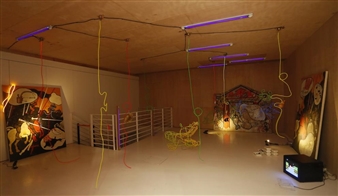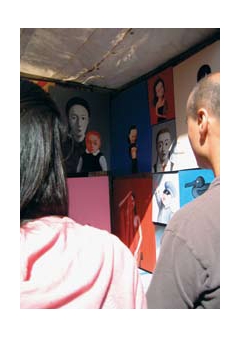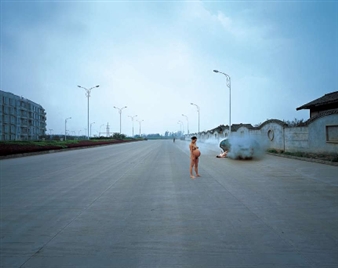ข่าวสาร และ สิ่งตีพิมพ์
With more than three decades of artistic output under his belt, Chen Shaoxiong couldn’t have been more than ‘prepared’ for his survey exhibition of that title, currently on view at Shanghai’s Power Station of Art.
Read MoreWhile the West witnessed Happenings and Joseph Beuys in the 1960s to ’80s, the East, specifically China, saw the emergence a decade later of the Big Tail Elephants: the first group in the country to use multimedia art forms.
Read MoreWithout question, the greatest recent change in the field of contemporary Chinese art is the market. Over the past five or so years, the market for contemporary Chinese art has heated up spectacularly, with prices doubling, tripling, or more within some twelve-month periods. The expectation has been that prices will continue to rise before stabilizing. Two leading questions are: what are the factors driving this revolution in the market, and how will these dramatic changes affect artistic production?...
Read MoreThe history of Chinese contemporary art is quite young, and the role of performance art within that history has rarely been investigated in depth. Many Chinese artists who have come to be known as major figures in the art world today have created influential works in the form of performances. No U-Turn (1989), for instance, carried all of the characteristics of a number of avant-garde collectives and movements that is now referred to as the ’85 New Wave...
Read MoreThe history of Chinese contemporary art is quite young, and the role of performance art within that history has rarely been investigated in depth. Many Chinese artists who have come to be known as major figures in the art world today have created influential works in the form of performances. No U-Turn (1989), for instance, carried all of the characteristics of a number of avant-garde collectives and movements that is now referred to as the ’85 New Wave...
Read MoreBidding Fierce For Blue-Chip Artists And Historical Works
Read More
Lin Yilin (b. 1964 Guangzhou, China) studied at the Sculpture Department, Guangzhou Academy of Fine Arts from 1983-1987.
In his works, the combination of conception and substance is emphasized, and the body itself turns into a kind of material and visual stimulant. Most of his works happened on the street and unusual space, which echoed the flourishing urban life in contemporary China.- Since he immigrated to the United States, he has been undergoing a radical change in my career. Confronting another social system and cultural background, his thinking direction is gradually changing and focusing on national politics. By comparison between Chinese and American society, he found the common and an amusing aspect among the great national politics. Their limitation is deeply roots in slogans such as claiming for justice and patriotic principles. A country's activities are usually under the flag of justice to have all kind of absurd actions and competitions, and lately this kind of thinking is reflecting in his works.
Selected solo exhibitions include Shanghai Gallery of Art, Vitamin Creative Space (Guangzhou), ISE Cultural Foundation (New York). Selected group exhibitions include Guangdong Museum of Art, Louisiana Museum of Modern Art (Denmark), BaseB (Milan), He Xiangning Art Museum (Shenzhen, China), Tang Contemporary Art (Beijing), Visual Art Center of New Jersey. Lin is represented by Shanghai Gallery of Art and Vitamin Creative Space. Lin Yilin lives and works in New York and Beijing.
For additional information about this artist, visit Mutual Art







